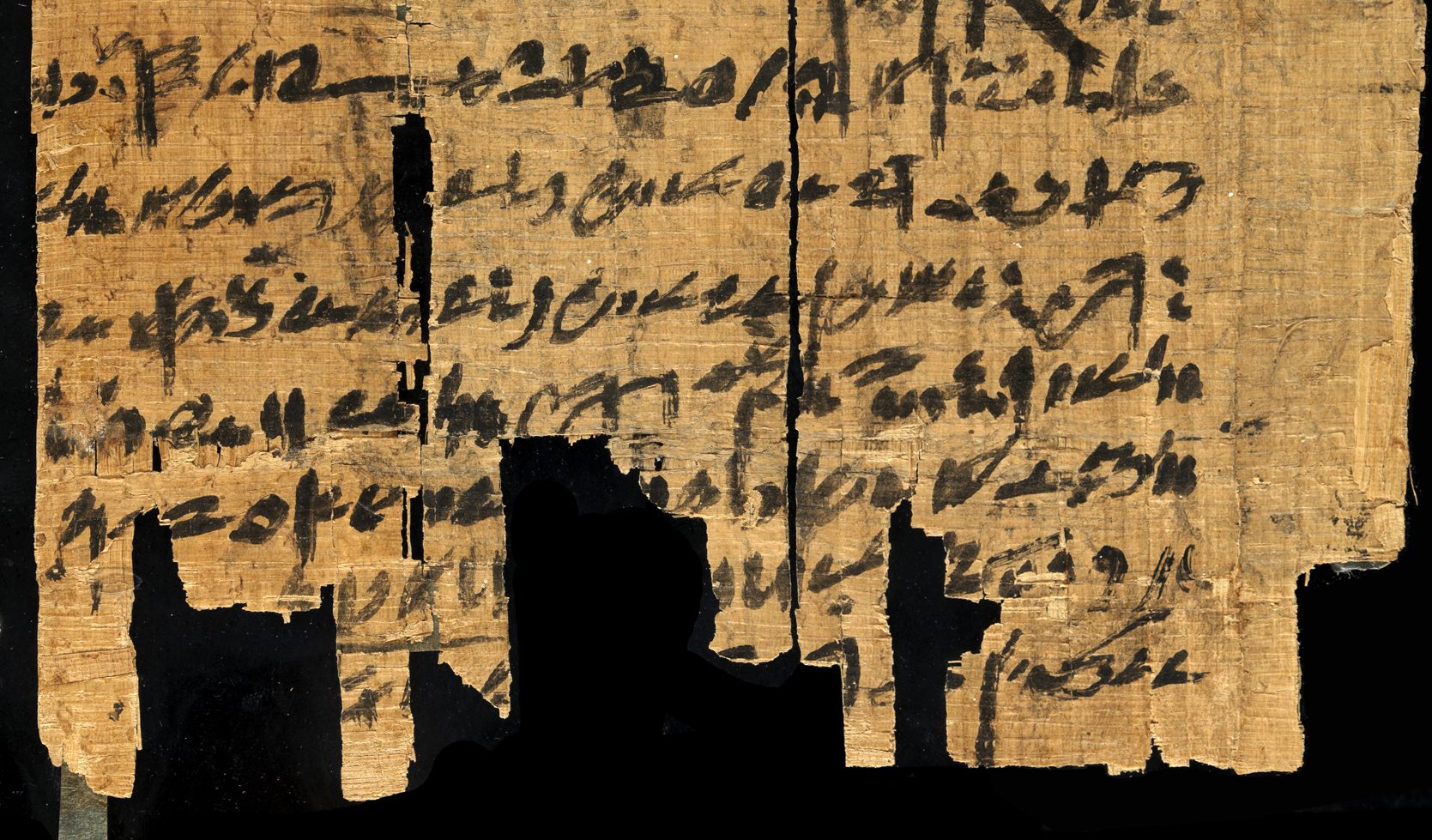Papyri
The pilot version currently offers five documents (three papyri) for online viewing, courtesy of the Louvre.
- P. Louvre E 7851 recto
- P. Louvre E 7851 verso
- P. Louvre E 7852
- P. Louvre E 7856 recto
- P. Louvre E 7856 verso
Search the content of the papyri!
How it works
All separate words and names have been tagged. You can activate these annotations of a papyrus by clicking on the speech bubble icon in the top left corner of the viewer. If you then hover your pointer over a word, a box will pop up containing the transcription, transliteration and translation of the word. If you are interested in the various spellings of a single word or name, you can search our ever extendable and interactive Wörterbuch and Namenbuch.
Under each document there is a heading ‘Questions about this manuscript’ with a number of questions and answers below it. These questions are based on the assumption that you have studied Lesson 1 in the course book A Very Easy Crash Course in Abnormal Hieratic. Being a Step by Step Introduction to the Least Accessible of All Ancient Egyptian Scripts (2013), which you will find under Resources.
Once our proof of concept will develop into The Abnormal Hieratic Global Portal––this website is still just a pilot––we will add videos explaining e.g. the multifunctional sign, what you need to know about the gods, why you should know the alphabet by heart, and the article.
Learning Lesson 1 of the course book by heart––and first and foremost the alphabet––will be a great help if you want to get the most out of our questionnaire. If you are not prepared to do this, you should probably ask yourself what you are doing here. One more tip: memorising the frequent words and expressions that are listed on p. 32-38 of the course book will be an immense help. You yourself can add to the list by collecting words such as ı͗rm and ḥnꜥ once you come across them.
Want to add more?
We are happy to add additional papyri. This website is, however, only concerned with already published Abnormal Hieratic sources. We do not want to infringe in any way on the publication rights of authors working on the unpublished material.
